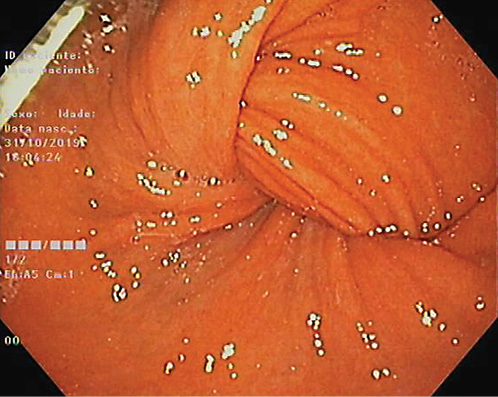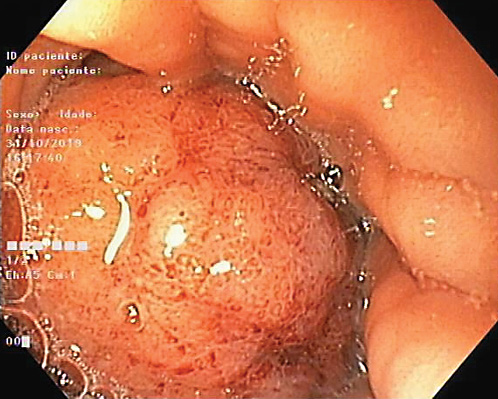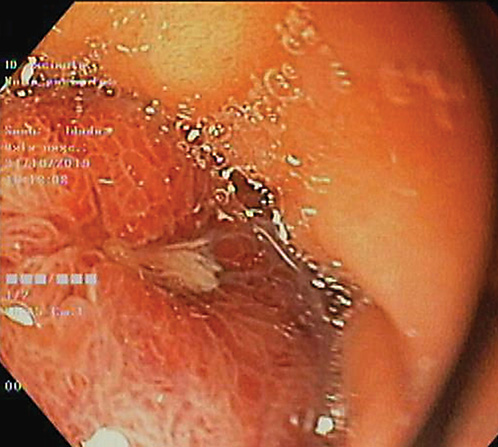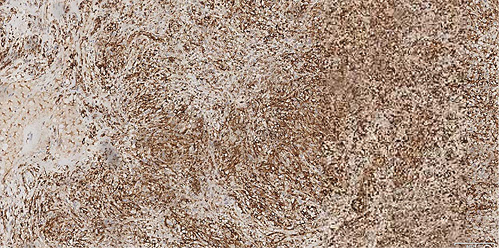We present the case of an 87-year-old woman admitted to the emergency room due to persistent vomiting in the previous 4 days. She also complained of an intermittent abdominal pain and a weight loss of 10 kg with months of evolution. On physical examination, she had audible bowel sounds, painful palpation in the epigastrium without signs of peritoneal irritation. The laboratory panel showed only isolated neutrophilia, and the abdominal X-ray had no evidence of bowel distension.
The upper gastrointestinal endoscopy showed a distended gastric body and complete torsion of the gastric folds in the antropyloric region (“scarf-ring sign” shown in Fig. 1) causing obstruction to the passage of the endoscope.

Fig. 1 Initial endoscopic image of complete torsion and invagination of gastric folds in the antropyloric region, compatible with the “scarf-ring sign.”
After several attempts of aspiration, lavage and torque, it was possible to completely revert the torsion and reveal a bulky, semipediculated polypoid lesion with a large base of implantation on the anterior face of the distal body. Its surface was covered by congestive gastric mucosa with central erosion, suggestive of a submucosal lesion (Fig. 2, 3).

Fig. 2 After endoscopic resolution of gastric torsion, a bulky semipediculated polypoid lesion was observed.

Fig. 3 Polypoid lesion with surface covered by congestive gastric mucosa with central erosion, suggestive of a submucosal lesion.
Following the endoscopy, the patient tolerated progressive diet with no recurrence of vomiting. She was discharged and referred to a surgical consultation. The patient later underwent a laparoscopic atypical gastrectomy. The pathological specimen was compatible with a 4 × 3.2 cm gastrointestinal stromal tumor (GIST), with a low mitotic index (1/50 HPF), suggestive of a low-risk tumor by the modified National Institute of Health classification [1] (Fig. 4).

Fig. 4 Histology of the resected specimen with immunohistochemical study revealed CD117 positivity. Magnification ×20.
“Ball-valve syndrome” is a condition caused by intermittent prolapse through the pylorus of a gastric lesion, first described in 1946 by Hobbs and Cohen [2]. The clinical manifestations are variable according to the degree of obstruction, ranging from abdominal discomfort or intermittent abdominal pain, nausea, vomiting and loss of appetite. The diagnosis is supported by imaging and/or endoscopic findings. The observation of a “scarf-ring sign” on endoscopy is a valuable clue to the diagnosis [3]. This is a rare GIST presentation, with only 18 cases previously reported in the literature [4].














